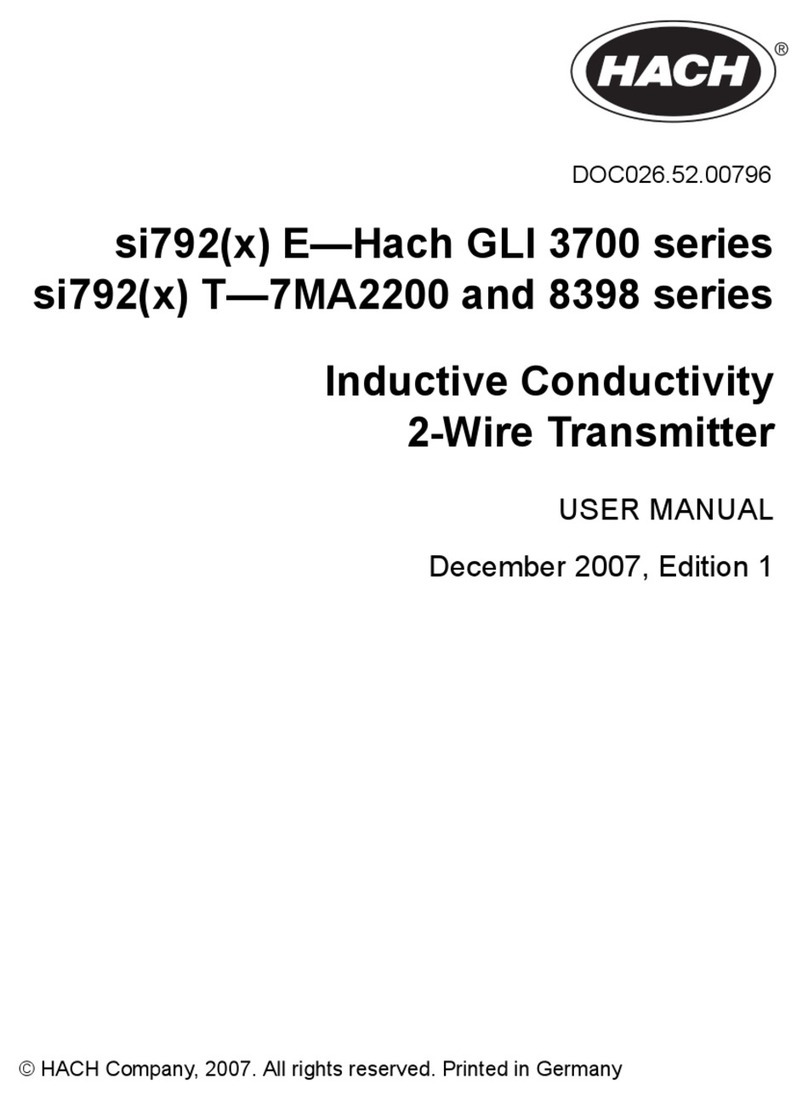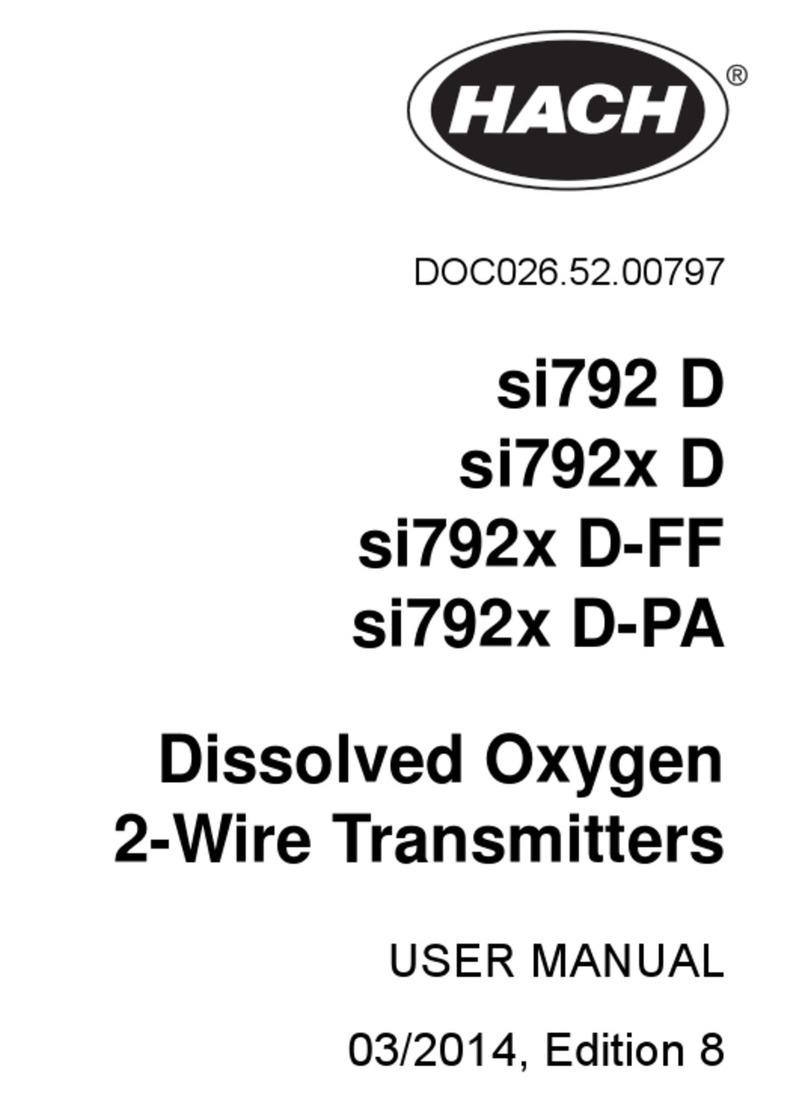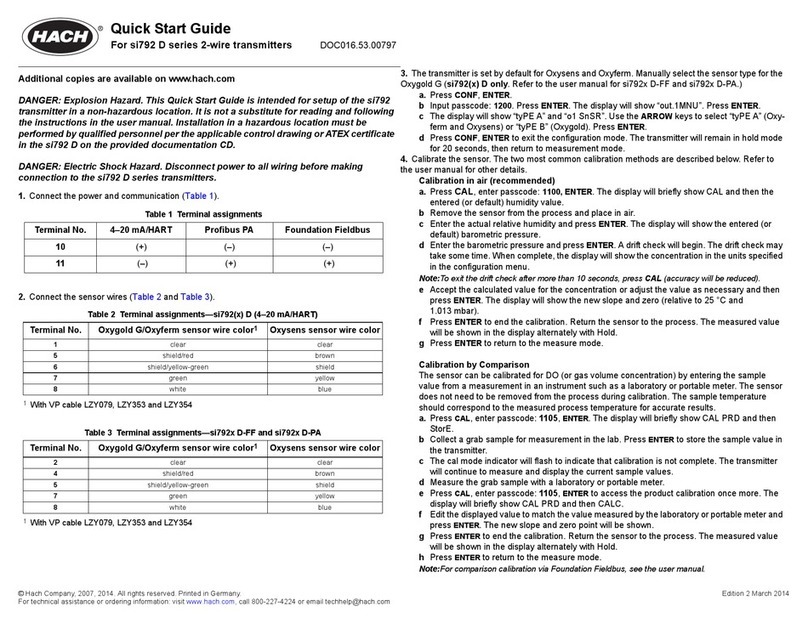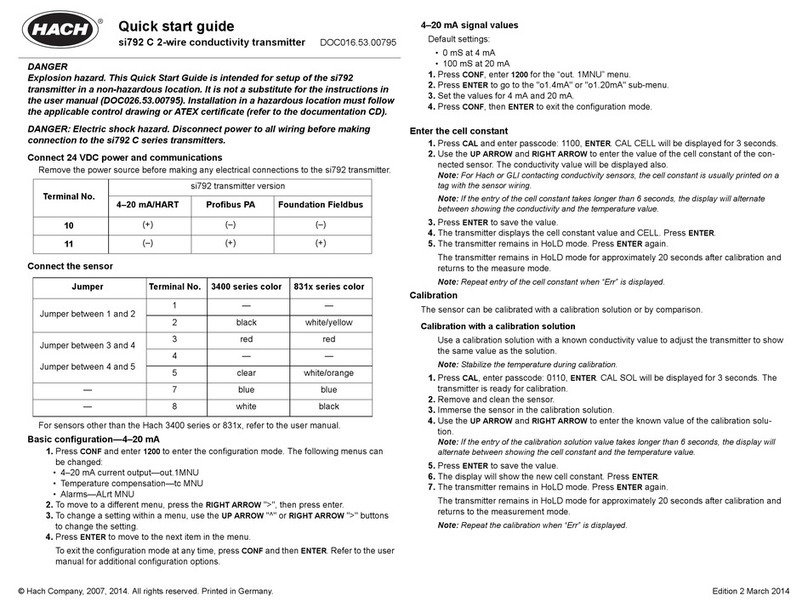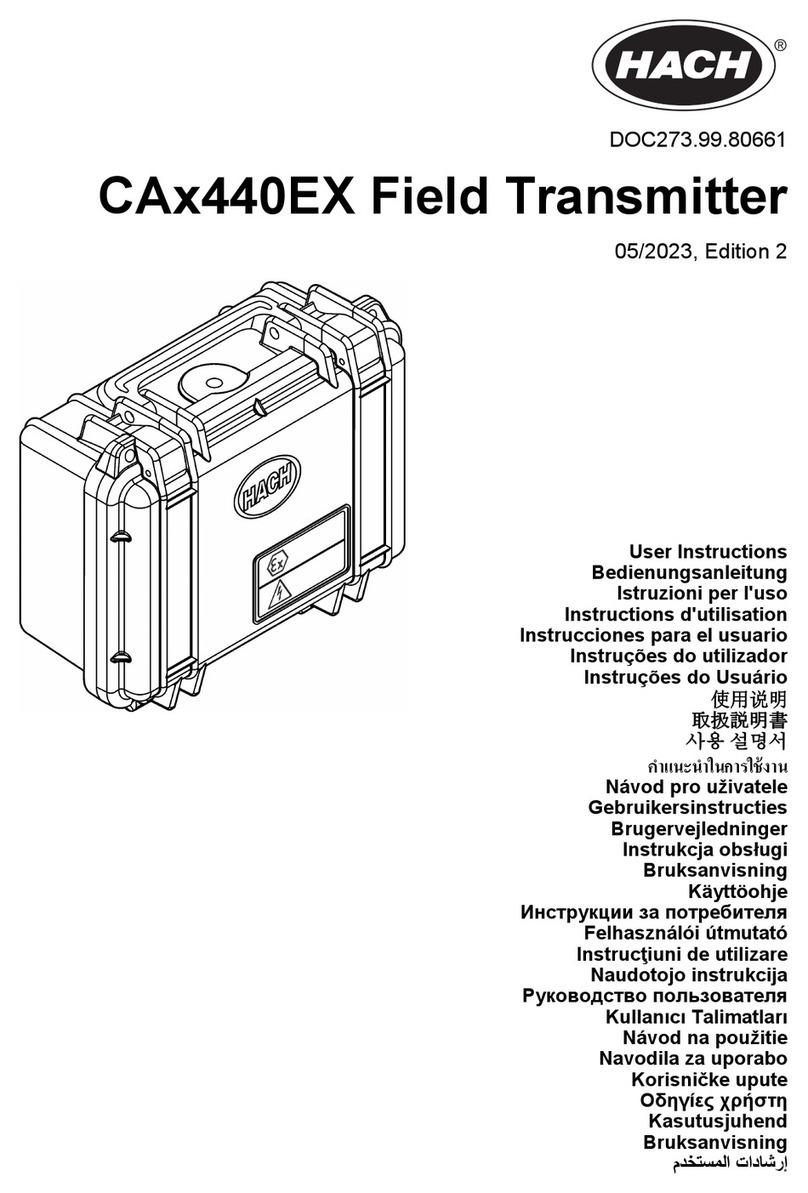
2.2 Hazardous location (North American classification)
The CAx440EX field transmitter is made for use in explosion hazardous areas and is an Ex-barrier
module for the GS2440EX sensor.
The field transmitter is a power supply and a radio communication device. The field transmitter
supplies power to the GS2440EX sensor and transmits data from the GS2440EX sensor to the Hach
H2S Data cloud server.
The field transmitter can be installed as an “associated apparatus” in the safe area, where the field
transmitter operates as a normal barrier module. Also, the field transmitter is an accessory for use in
explosion hazardous areas (Division 2) and works as an Ex barrier that supplies intrinsically safe
outputs to Division 1 equipment (e.g., the GS2440EX sensor). The field transmitter must be operated
in the battery-power configuration when installed in a hazardous location.
Since the field transmitter can be installed in the "safe area" as an “associated apparatus” and as an
Ex barrier in Division 2, it is important for the safety of the user that the installation instructions from
the manufacturer are obeyed.
Conditions of use:
• Use only batteries with the part number LXZ449.99.00003 and delivered by the “Hach Company”
with the CAx440EX field transmitter. Use of other batteries with the CAx440EX field transmitter
may have an effect on the Ex-safety and voids the hazardous location certification.
WARNING
Explosion hazard. The batteries must only be changed in an area free of ignitible concentrations.
Do not connect or disconnect when energized.
Do not disconnect while the circuit is live or unless the area is free of ignitible concentrations.
Intrinsic safety—specific conditions of use:
Inductance and capacitance values specified for the connections Power/4-20 mA and RS-232 have
not been determined for simultaneous combination. Precautions must be used to make sure that the
combination of resistive, inductive and capacitive energies cannot cause an incendive spark. Refer to
IEC 60079-25 for de-rating instructions. Use with the GS2440EX sensor with cables up to
120 meters has been determined to be safe.
2.3 Radio (cellular)
CAUTION
This equipment is not intended for use in residential environments and may not provide adequate protection to
radio reception in such environments.
CAUTION
Electromagnetic radiation hazard. Make sure that the antenna is kept at a minimum distance of 20 cm
(7.9 in.) from all personnel in normal use. The antenna cannot be co-located or operated in
conjunction with any other antenna or transmitters.
N O T I C E
Network and access point security is the responsibility of the customer that uses the wireless instrument. The
manufacturer will not be liable for any damages, inclusive however not limited to indirect, special, consequential
or incidental damages, that have been caused by a gap in, or breach of network security.
The CAx440EX field transmitter includes a cellular modem. The field transmitter is approved for
mobile and fixed use with respect to RF exposure compliance. During cellular transmission, keep a
minimum distance of 20 cm (7.9 inches) between the field transmitter and the user to obey regulatory
requirements.
In addition, the compliance regulations that follow are met:
• FCC (US) - Title 47CFR, Part 15B, 22H, 24E, 27, 90
• ISED (Canada) - ICES-003, RSS 130, 132, 133, 139, 140
English 7







